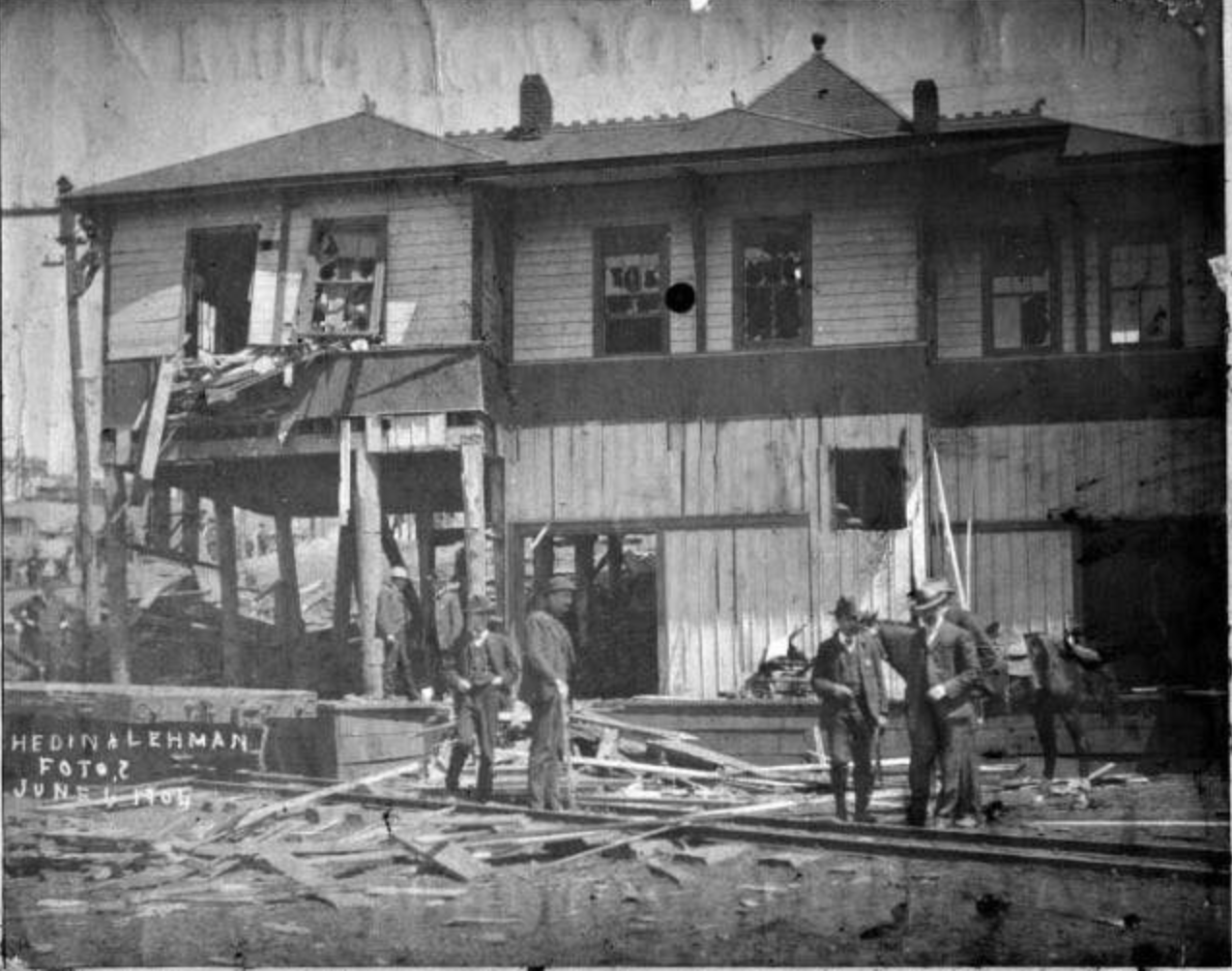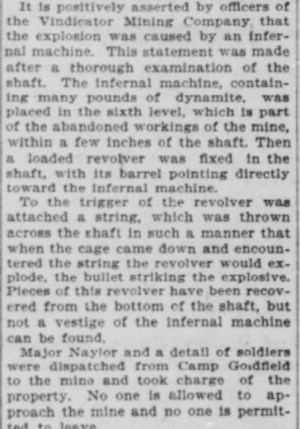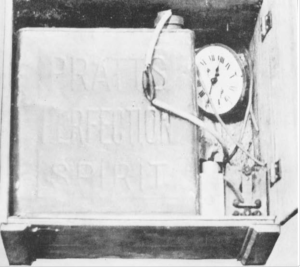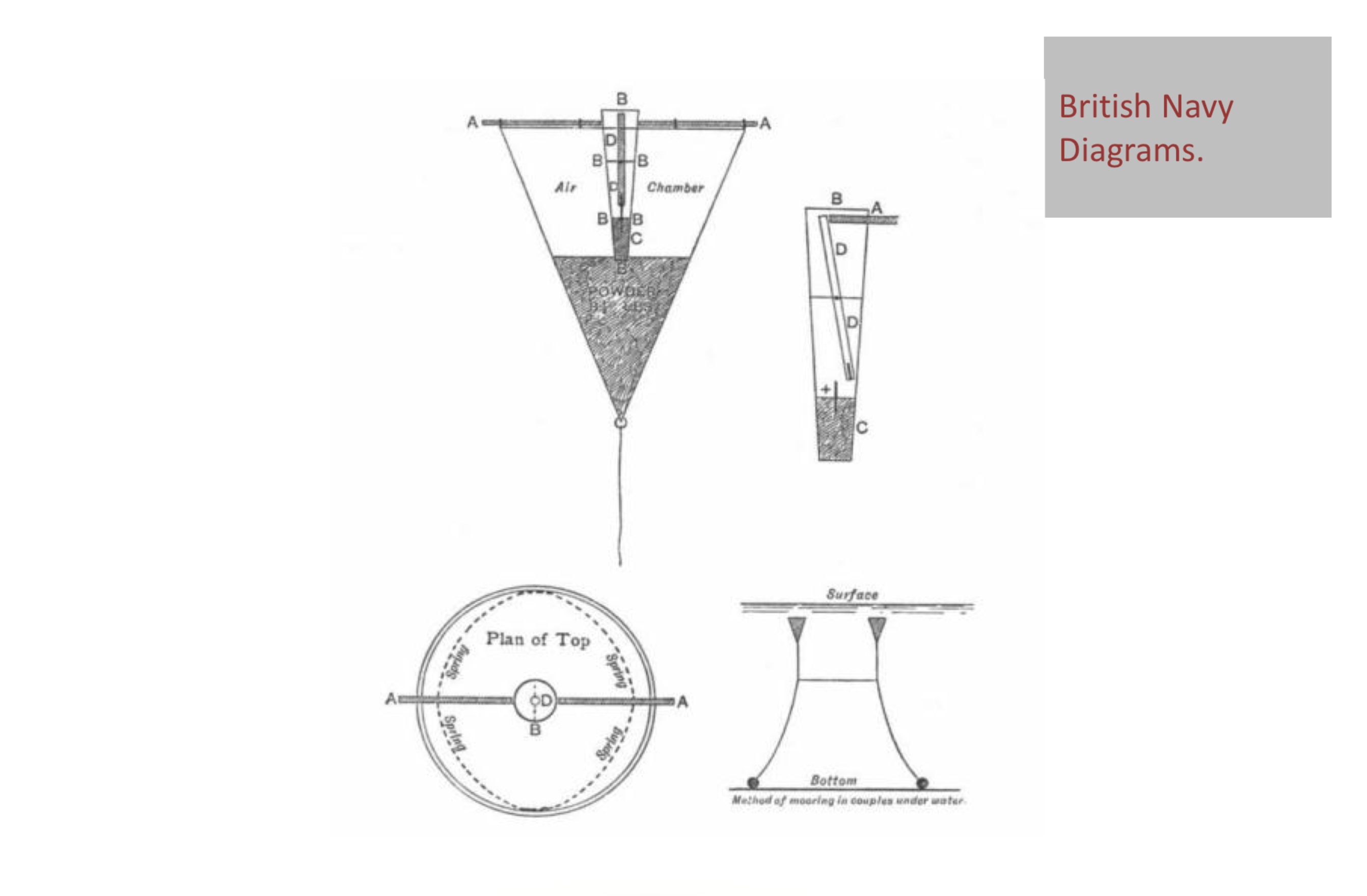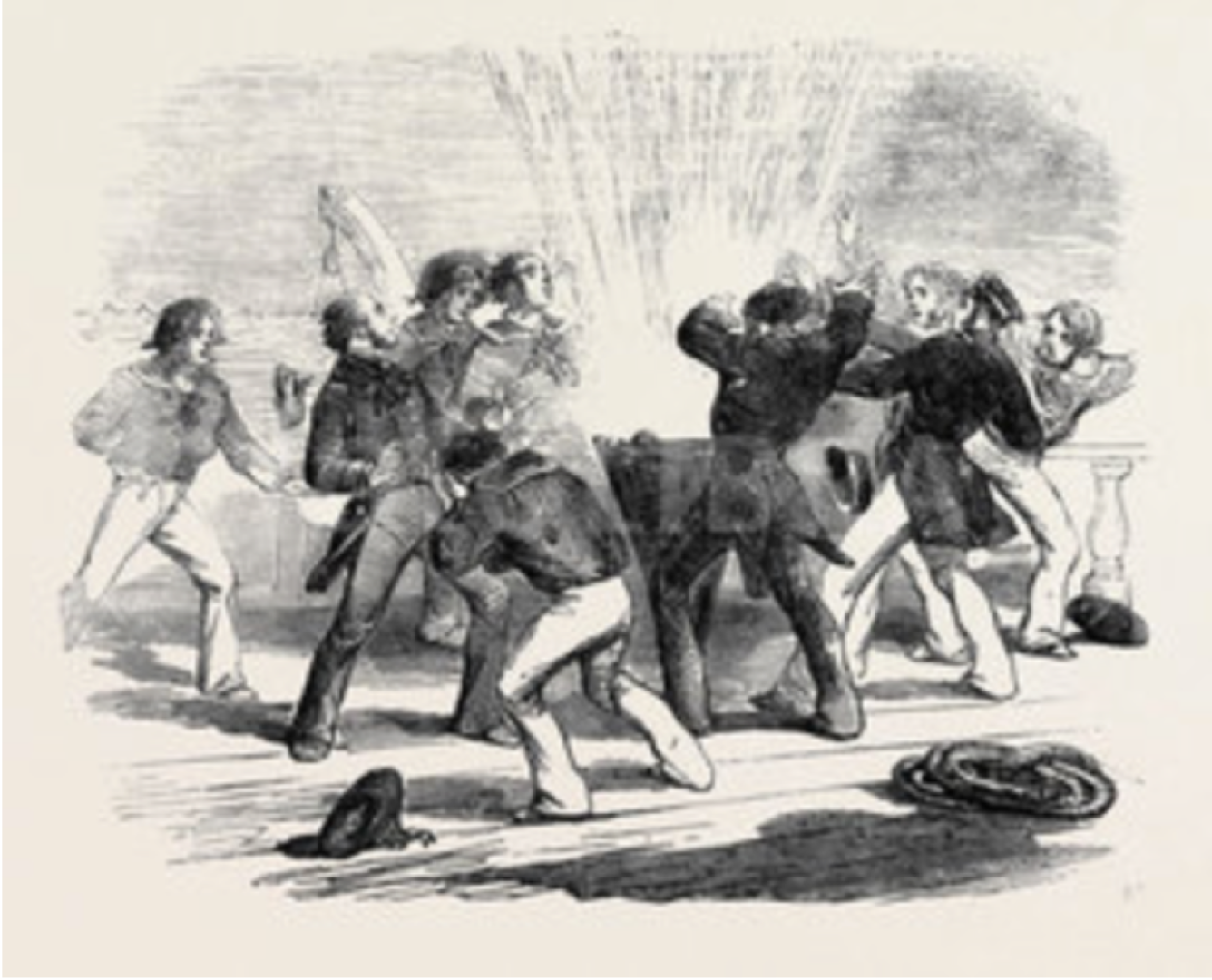In a couple of posts over the last few months I’ve discussed “stay behind” devices.
In this post I discussed Russian stay-behind devices in the Crimean War in the 1850s . The Russians, in ceding Sebastopol to the French and British, were able to predict where attacking troops would be – whether that be to seize high profile buildings or munition dumps, and lay “booby-traps” which caused significant problems.
In this post I discussed Russian stay-behind explosive devices in WW2, used to attack the invading Nazi army. In particular the Russians in many instances were able to predict the sort of buildings that the Wehrmacht would be attracted to use as headquarter buildings – typically large imposing buildings with large rooms suitable for converting into the various facilities needed by a military headquarters. Using both long delay mechanical timers and radio-controlled F-10 devices they had considerable success in Kharkov, Kiev and Odessa, targeting incoming headquarter units , in many cases several days or weeks after losing the territory. In many cases, including a device personally emplaced by Ilya Starinov, deliberately “poorly concealed devices” were laid “on top” of the deeply buried device. EOD troops inspected the proposed building, and cleared the obvious device in the cellar (not realising another much larger device was hidden under it). Three weeks later the massive device was detonated, successfully taking out an entire headquarter staff.
With all that in mind, I have found another use of a very similar tactics, but used by the Germans against the Allies, in WW1. Booby trapped explosive devices were used extensively by the Germans in WW1. In this example, the tactic used by the Russians, against the Germans seems to be identical.
On about the 18 March 1917 Bapaume, a small but strategic town was captured from the Germans. After taking the town, an EOD unit found a mine of some sort in the cellar under the Town Hall, a prominent building – whose cellars were deep enough to provide shell shelter – so an attractive structure for forces “moving in”. It is believed that the Germans may have expected or hoped that a Divisional Headquarters may have decided to use the place. I think that in an earlier part of the war the Town Hall had been indeed previously used by a British or French headquarters. As it happens that did not occur but about 30 Australians had “moved in” along with a tea stall from the “Australian Comforts Fund”. On the night of 26 March, so about 8 days later, a timer, set before the Germans retreated, caused a massive device to explode, killing most of the occupants. I have found reports that the charge could have been as large as 10,000lbs, (but I think that unlikely, more likely maybe a couple of hundred lbs) and had two independent “time pencils”, of the type where the delay is provided by acid eating through a steel thread holding a striker under spring tension. Interestingly there is a suggestion that the German Pioneers who laid the devices defecated on the ground above it, to dissuade careful inspection. I also understand that the German withdrawal from Bapaume was part of a carefully planned operation to fall back to the Siegfried Line, which will have given time for the preparatory effort.
UPDATE: I have learned from Ian Jones that the details of the incident aren’t quite as I described. A large, easily found device was discovered and made safe in the cellar. a somewhat smaller device carefully hidden in the tower of the Town Hall was the device that exploded, collapsing the cellar trapping people in there.
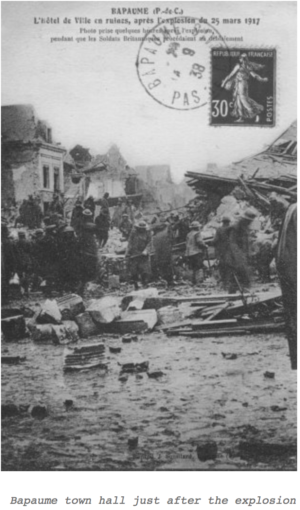
Shortly later a German was captured nearby and interrogation of him suggested there were other devices in the area. Before this warning could be circulated, at 12.37 p.m. On March 26th, the luxurious dugout system on the edge of Bapaume, in which a headquarters had been set up was entirely destroyed by a similar mine. Several other similar devices appear to have been used in the area.
Here’s a diagram of a German delay switch. I think the Germans also had mechanical clockwork delay switches.
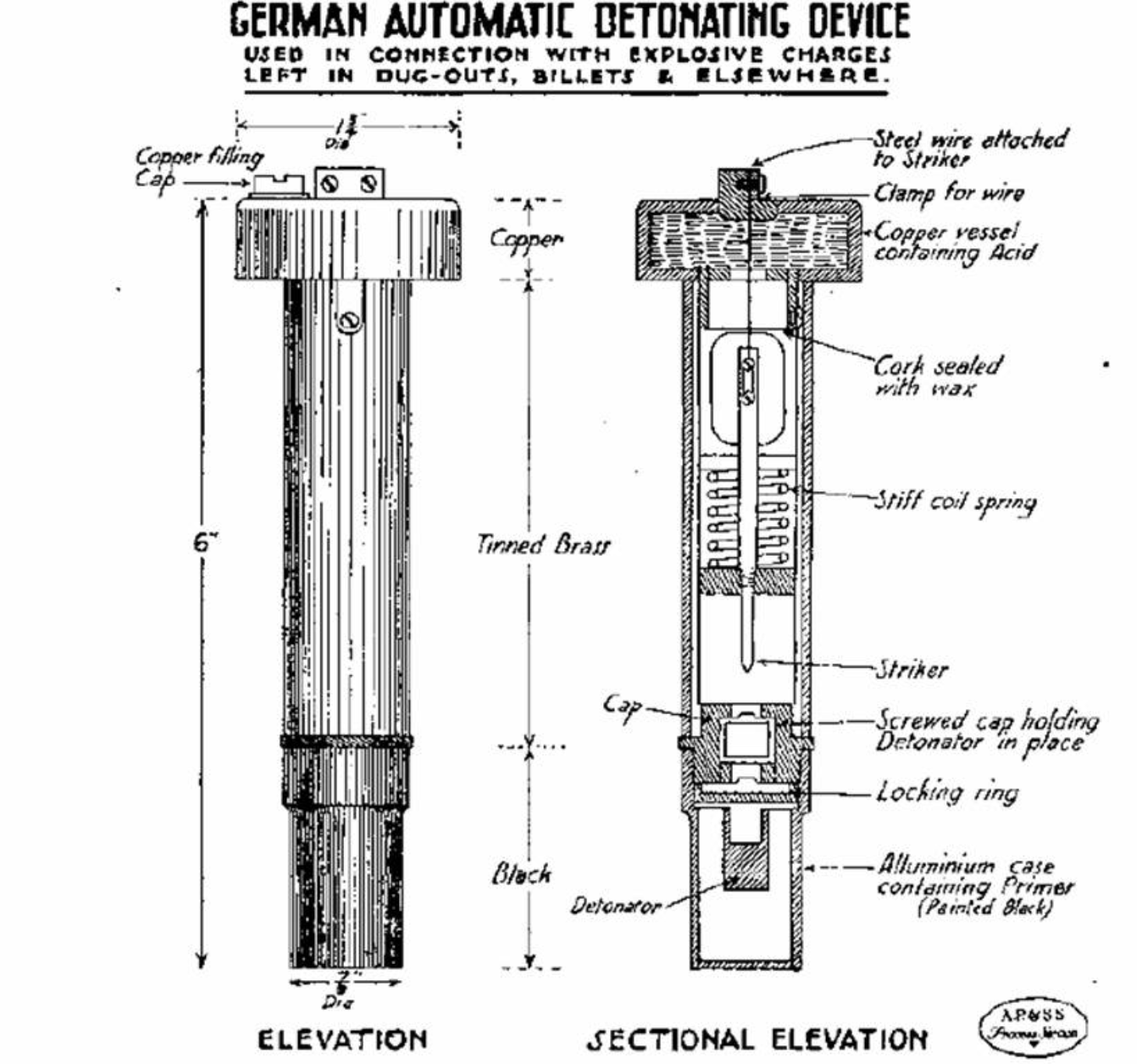
German WW1 Boob-traps are very well explained in Ian Jones’s excellent book “Malice Aforethought” Anyway, I think its interesting that a tactic perfected by the Germans in WW1 was used by Russians against the Germans in WW2. There are lessons here too about “predictability” of the target’s behaviour in terms of choice of location for an explosive device, and also in terms of disguising stay-behind devices. Of course, booby traps were used by the British, French and Australians too.
